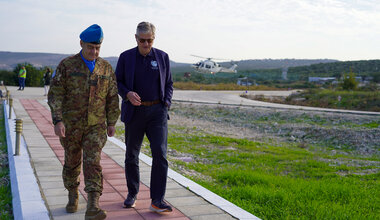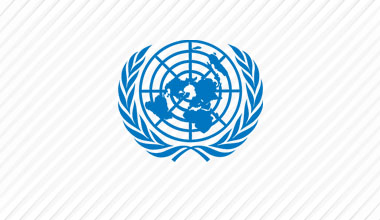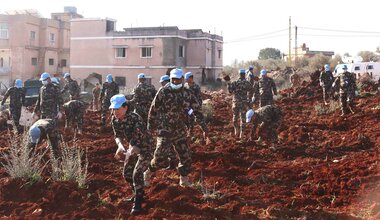A point of agreement on the Blue Line
The Lebanese Armed Forces have confirmed their acceptance of the latest point to be identified on the Line of Withdrawal between Lebanon and Israel, also called the Blue Line.
On a sunny spring morning on the 5 March 2014 the Lebanese Armed Forces confirmed their agreement following earlier surveys in the period before by Israeli technical teams supervised by UNIFIL to have a permanent marker constructed on the precise spot.
The visible marking of the Blue Line is estimated to require about 470 markers, which averages to 4 markers per kilometre. The visible marking of the Blue Line will provide clarity on the ground for the local population and the troops to avoid confusion, inadvertent crossings and maintain peace.
The process starts with the Lebanese Armed Forces technical team first taking meticulous measurements and identifying a point on the ground, which is marked with a metal pin and spray-painted in red. The pin is also surveyed by UNIFIL's GIS (Geographical Information Services) team who in turn validates the point using specialized mapping technology, and confirms their agreement with a layer of blue paint. The Israeli side confirms their agreement by marking the metal pin in yellow.
The final agreement by the Lebanese Armed Forces team is marked on the metal pin with an additional coat of red paint.
This multi coloured metal pin is now the confirmed and agreed spot by all parties where UNIFIL engineers will erect a large blue barrel, clearly visible from both sides of the Blue Line.
The Line of Withdrawal was identified in 2000 jointly by the UN, Lebanese and Israeli officials. Its visible marking which commenced in 2007 is one of UNIFIL's most significant peace-building and de-conflicting activities and a great example of how technology can aid in the confidence building measures between the various parties.
 UN
UN United Nations Peacekeeping
United Nations Peacekeeping








